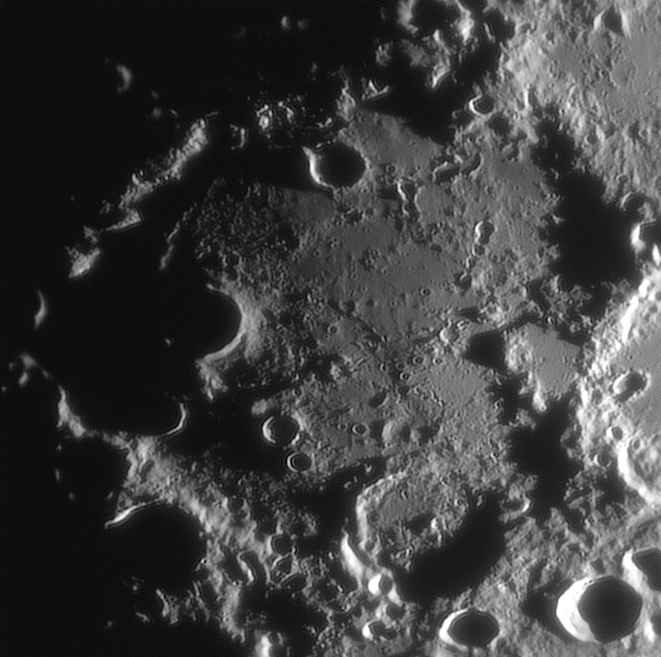Observation by Bill Leatherbarrow: Crater Deslandres
Uploaded by
Test User
Observer
Bill Leatherbarrow
Observed
2020 Mar 02 - 19:19
Uploaded
2020 Mar 04 - 10:09
Objects
The Moon
Equipment
- OMC300 Mak-Cass
- ASI290MM camera
- IR 742nm pass filter
Location
Sheffield
Target name
Deslandres
Title
Crater Deslandres
About this image
W Leatherbarrow
An evening of fair seeing on 2 March 2020, at 19.19 UT.
I had a remarkable view of the floor of the huge formation Deslandres. Deslandres has a diameter of around 234 km, but it is so degraded that it was formally named only in 1948 after the French astronomer and one-time Director of Paris Observatory, Henri Deslandres. It had previously been unnamed or referred to informally as ‘Hell-plain’ (after the 33-km crater Hell that lies within it) or Hörbiger (a name suggested by Fauth and still used by Wilkins and Moore as late as 1960). My image hints at the wealth of detail visible within Deslandres in a moderate telescope. The original floor of the crater is lost below layers of subsequent infill, either from ejecta deposits or lava flows. There are two prominent crater chains running roughly parallel to each other. One long one begins outside the northern wall of Deslandres and passes near the western flank of Hell, but this is largely in shadow in the image above. The other is much shorter and consists of a chain of six, possibly seven, shallow depressions to the north of Cassini’s Bright Spot (see below). These are apparently secondary impacts, but it is by no means clear from where. They do not point back to Imbrium, which is responsible for most of the secondary scarring in this region of the Moon.
There are two interesting younger features on the ancient floor of Deslandres: a patch of mare-like material in the northeastern corner and Hell Q, a fresh 4-km crater with a bright ejecta blanket north of Lexell. Clementine mineralogy data shows the patch to be yellow in colour, suggesting that it is indeed an iron-rich, lower titanium mare-like basalt. Hell Q and its impact blanket are best seen under higher illumination and are otherwise known as Cassini’s Bright Spot, where the Italian astronomer suspected transient activity. It has been argued that Hell Q is the result of an oblique impact from the west, since there are suggestions of a downrange ‘comet-tail’ of ejecta to the east, but the jury is still out on that.
Files associated with this observation
Like this image
Copyright of all images and other observations submitted to the BAA remains with the owner of the work.
Reproduction of work by third parties is expressly forbidden without the consent of the copyright
holder. By submitting images to this online gallery, you grant the BAA permission to reproduce them in
any
of our publications.


